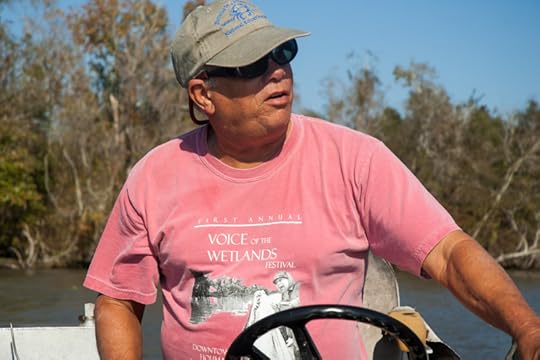James Lockhart Perry's Blog, page 13
September 23, 2015
Schaerbeek
This tiny, hidden cemetery in a Flemish suburb of Bruxelles was originally cleared for the Tir National, a rifle range for training Belgian sharpshooters. In both World Wars, I and II, the German occupation authorities took advantage of its hidden location to use it as an execution ground for judicially convicted foreigners. In this capacity, it became the site of one of the great blunders of modern military diplomacy, when on October 12, 1915, the German authorities under the wooden-headed Baron von der Lancken stood the woman Edith Cavell up against the earthen embankment here and shot her for treason.
Technically, Edith might have been guilty of the charges. She was a proper English nurse who ran clinics and teaching schools for the Red Cross in Belgium. She saved the lives of countless wounded soldiers–German, French, English, or Belgian–without worrying about their nationalities and afterwards helped send the healthy individuals back to their own countries. In a war where millions died and millions more served, she might have been responsible for passing less than two hundred Allied soldiers through the lines into neutral Holland.
The Germans could not have picked a worse–in other words, a nicer, more honest and brave–candidate to make their point. Edith remained composed and forthcoming throughout her interrogation and trial and admitted to everything. She justified her life as a wartime nurse by saying, “I can’t stop while there are lives to be saved.” And as if that weren’t bad enough, her last words, reported by the Reverend Stirling Gahan, were, “Patriotism is not enough. I must have no hatred or bitterness towards anyone.”
Coming five months after the Lusitania fiasco and fifteen months before the Zimmermann Telegram, this judicial murder proved a gold mine for the British propagandists. It crystalized war-weary public support in Britain and did as much as anything to bring the reluctant United States into the war. The Germans never got the point and defended the decision through the end of the war–even going so far as to execute another perfect propaganda candidate, Gabrielle Petit (who definitely was a spy, not that anyone cared by then), on the same spot on the evening of 1 April, 1916.
L’Enclos des Fusillés, as it is now known, houses the graves of several dozen judicially executed Belgian patriots from both wars, many of the crosses adorned with rosebushes and sad photo medallions of the dapper, young victims. The tiny plot and its thick, wavy walls of spruce trees are surprisingly hard to find, but maintained with meticulous care. In the morning, you can hear the traffic from the surrounding town waking up, but it only serves to underline the value lost in the lives that ended here.
 Rosebuds in Enclos des Fusillés
Rosebuds in Enclos des FusillésFiled under: Travels Tagged: Belgium, Travel

Houma
Our nominee for Best Guide Ever is Jimmy Miller, son of the original and justifiably famous Alligator Annie, who whiled away an entire day exploring the cricks and bayous of southeastern Louisiana with us. We met him early in the morning at the Bayou Delight Restaurant on Bayou Black Drive and took off in his swamp boat for places we could never find again in a million years.
It doesn’t hurt when you show up between Christmas and New Year’s, when the already relaxed locals haven’t seen an outsider in weeks. Lockhart’s wife found Jimmy by asking around the shops and cafés in town in her best Texas drawl. He wasn’t working that week, but, gentleman that he is, showed up anyway. The result was some of the best–and most intricate–photos we’ve ever taken.
Lockhart has only suffered through two tours in his life (the other was to Petra in Jordan, another place where it pays to bring along someone who knows where they’re going). Yet, even if he was less snooty and obstreperous on the subject, he’s pretty sure Jimmy would own the title.
If you’re headed for Houma, here is Jimmy’s website, such as it is.
 Louisiana, USA.
Louisiana, USA.Filed under: Travels Tagged: Louisiana, Travel

September 16, 2015
Bruxelles
Down the street from his famous neighbor, Le Mannekin Pis, in Bruxelles, the capital city of Belgium, this statue, Le Cracheur (The Spitter), sits on a corner outside one of the city’s premier gay bars and vents his low opinion of tourists and citizens alike in a never-ending stream of liquid abuse.
Filed under: Travels Tagged: Belgium, Travel

Barcelona
One of the sillier arguments we’ve heard concerns where Cristoforo Columbo is pointing from atop this statue in the harbor at the end of Las Ramblas in Barcelona. Supposedly according to tradition, he’s pointing at the New World and hoping to talk the Castilian Monarchy into financing another trip. Revisionists claim that no, he’s pointing nostalgically back at his home in Genoa, Italy. But any child with a compass and a map can tell you in a matter of seconds that Columbus’ bronze finger is in fact pointing straight at Algeria.
The true puzzle for Lockhart is why the Catalans would want to erect a monument to an Italian in the employ of Castilians who discovered the Bahamas while looking for Indonesia. Yes, he reported back to Ferdinand and Isabella here, but given local history, the connection looks a little tenuous. Nevertheless, build it the Catalans did–with Spanish money, of course.
Filed under: Travels Tagged: Spain, Travel

Bruxelles
Everything has to start somewhere, and the European crusading frenzy started here on the Place Royal in 1201 when Godfried de Bouillion, the first so-called King of Jerusalem, leapt onto his steed and raised his standard to incite the attending mob into joining him on the 1st Crusade.
Godfried was something of a stalking horse for Pope Urban II and various European and Byzantine Kings, each of whom had their own reasons for putting him up to the job. He was actually a pretty good guy by Crusader standards and less inclined than most to confuse ethics with personal ambition. He refused the famous (or infamous, depending on your choice of religion) title, but history has saddled him with it anyway.

Filed under: Travels Tagged: Belgium, Travel

Ciudad de México
You never know whom you’re going to meet in Mexico City. Here, we were minding our own business at the Aztec ruins off the Zócalo, when we were swamped by the Miss Universe pageant.
The contestants do these side trips to provide local color for the eventual show, but actually seemed to enjoy themselves this afternoon. Like everything else in this fabulous city, they made for a splashy and colorful entrance. Miss Japan won that year (2007), by the way, even without our intervention.
Filed under: Travels Tagged: Mexico, Travel

September 15, 2015
Terminal Island
We prefer two of the older names for this island in Los Angeles Harbor–Rattlesnake Island or Deadman’s Island (after the latter was dynamited and added to the landfill here)–considering one of the more infamous episodes of its history.
The fishing Japanese-Americans who settled here called it Fish Island and, without bridges to the mainland, developed an odd culture and even dialect that never completely landed them in either country. Not that it mattered after December 7, 1941, and Pearl Harbor. The entire adult male population was immediately rounded up by the FBI and sent to prison without trial. The rest of the inhabitants were shortly thereafter bussed off to interment camps for the duration of World War II without the slightest excuse other than pure hysteria. Everything has to start somewhere, and this operation gave rise to President Roosevelt’s Executive Order 9066 and the instant dispossession of an entire race of American citizens.
After the war, the stolen island was taken over by various maritime enterprises–all safely in Caucasian hands–which have nearly all gone bust by now. The road out past Al’s Boatyard and all those empty yards, rusty cranes, and dreary hulks leads to the immaculate Federal Terminal Island Correctional Facility, home of the Manson Family during their 1970 trial. Karma indeed.
The statue in the photo was erected in 2002 by descendants of the lost fishing villagers. The dignity of this memorial at the entrance to the island says everything about the victims and nothing about the perpetrators.
Filed under: Travels Tagged: California, Travel

Bran
Centuries before Bram Stoker found inspiration for his novel Dracula, best-selling stories were circulating in Europe about the fifteenth-century Vlad III, Prince of Wallachia, better known as Vlad Țepeș, or Vlad the Impaler. Vlad’s favorite punishment for invading Turks, recalcitrant Boyars, and highway robbers alike (around 100,000 total by his own estimate) was impalement through the stomach on a stake driven into the earth.
It was said that Mehmet II, the Ottoman Sultan and Vlad’s arch-enemy, was so sickened on one invasion by the sight of 20,000 of his advance troops impaled on the banks of the Danube, that he turned around and went home. Not that Mehmet was much of a humanist either–he just preferred more pleasant fates like beheading (for his enemies) and strangulation or testicle-crushing (for his relatives).
Incidentally, the Dragon Society was formed in the fifteenth century to defend Christianity against the Moslem Turkish horde. Vlad’s father, Vlad I, took the sobriquet Dracul to signify his membership, so Vlad added Dracula to his own name. Three castles in the Romanian back-country are as associated with Vlad as the tourist trade will allow. This one at Bran has the most tenuous connection (he might have stayed here one night), but it fits better with Stoker’s gruesome hero than the fighting castles Vlad actually inhabited.
Ordinary Romanians remember Vlad as a freedom-fighter and despise the Dracula association (along with the thousands of ghoulish visitors it brings to the country every Halloween), but can’t resist taking all the tourist gold. They like to redirect the more gruesome imagination to the story of the true Dracula, one Elizabeth of Bathori, a wildly promiscuous Hungarian (not Romanian) Princess of Slovakian (not Romanian) residence, who discovered the secret of eternal youth in bathing in a mixture of milk and virgin blood. After murdering 650 local virgins, the Princess was walled up in her (not Romanian) castle and allowed to wither away.
Or so the stories all go…
Filed under: Travels Tagged: Romania, Travel

Pitești
There is a saying in Romania that, if you walk thirty minutes in any direction, you’ll find an impoverished Gypsy. In the back-country around Pitești, the saying sounds about right. The Romani were the first to be laid off in the industrial collapse that followed the end of Communism, and most have been reduced to the odd and occasionally dangerous scrabble for a living that they knew before the Communists came to power.
Firewood gathering is a major enterprise, both for sale to each other and to heat their own dwellings. You see the carts late at night on the country roads, often with a police official questioning the driver on the source of his wooden loot. A wrong answer will get the thief eight to ten years in a local jail, although fortunately not the political prison, Experimentul Pitești, that made this town infamous until its shutdown in 1952.
The term Gypsy, by the way, is no longer acceptable usage for the Romani people. It has a connotation somewhere near the epithet nigger for a black person or wetback for a Mexican-American. You still find the word in contemporary speech and literature, but its usage seems to be declining. If the current trends continue, bigots the world over will run out of acceptable insults. Maybe they’ll have to just shut up and say nothing at all?
Filed under: Travels Tagged: Romania, Travel

Julian
We first arrived in the California desert expecting to find Lawrence of Arabia–all romantic, pristine sand dunes with wisps of dust devils trailing off into the air. The reality was more of a trash heap, at least in the more accessible areas, with all manner of household and industrial waste strewn across the landscape.
Nowadays, he realizes things are a little more nuanced than either impression. One thing is certain–as this photo from the Anza-Borrega Desert shows, nature isn’t taking the human invasion lying down. Sooner or later, everything gets swallowed up. It might take decades or even centuries, but the desert is a living, breathing organism that has been around for eons longer than we have and will remain long after we’re gone.
Filed under: Travels Tagged: California, Travel




